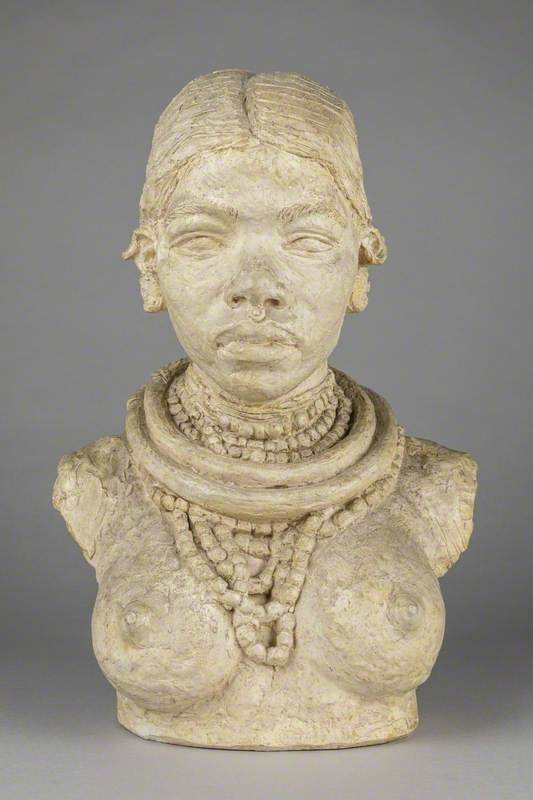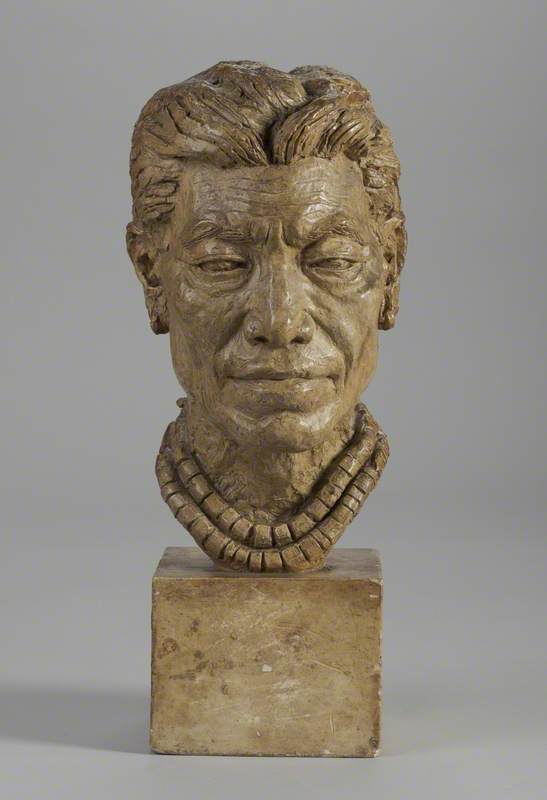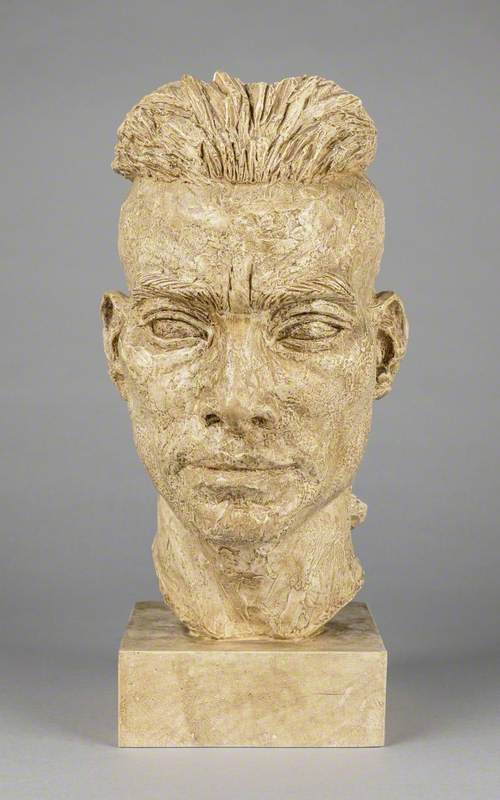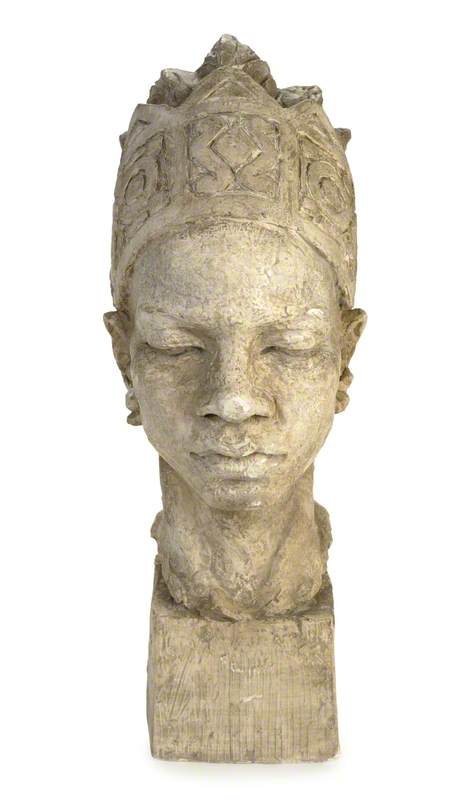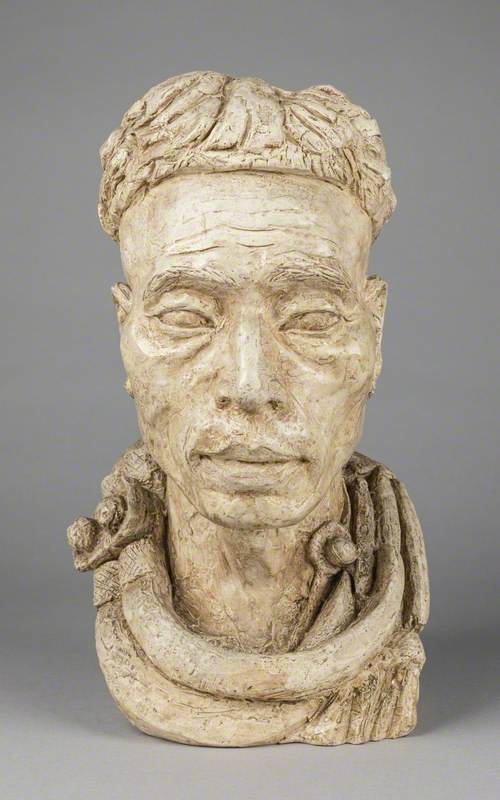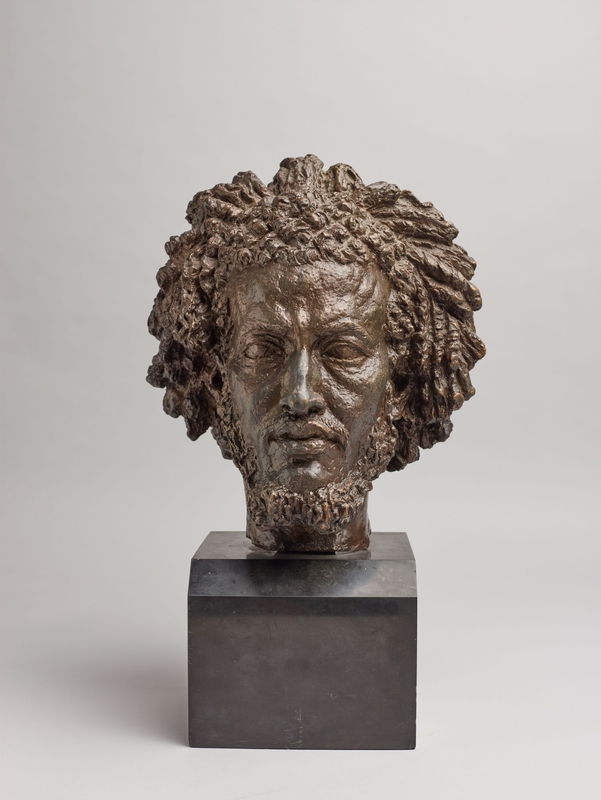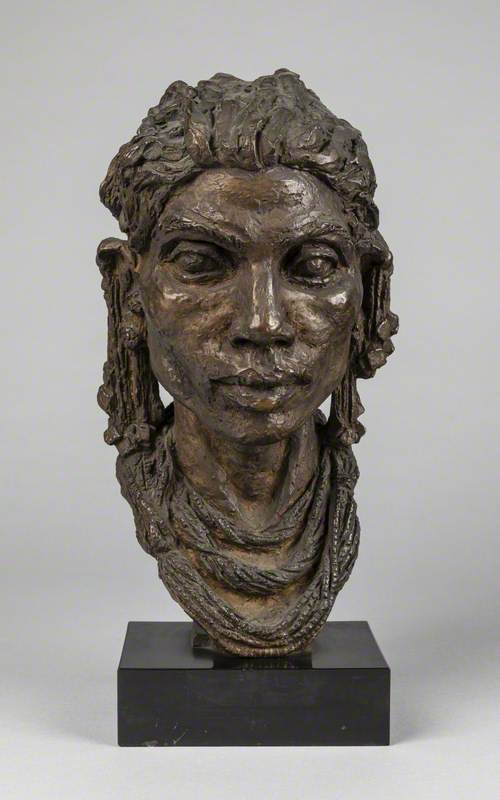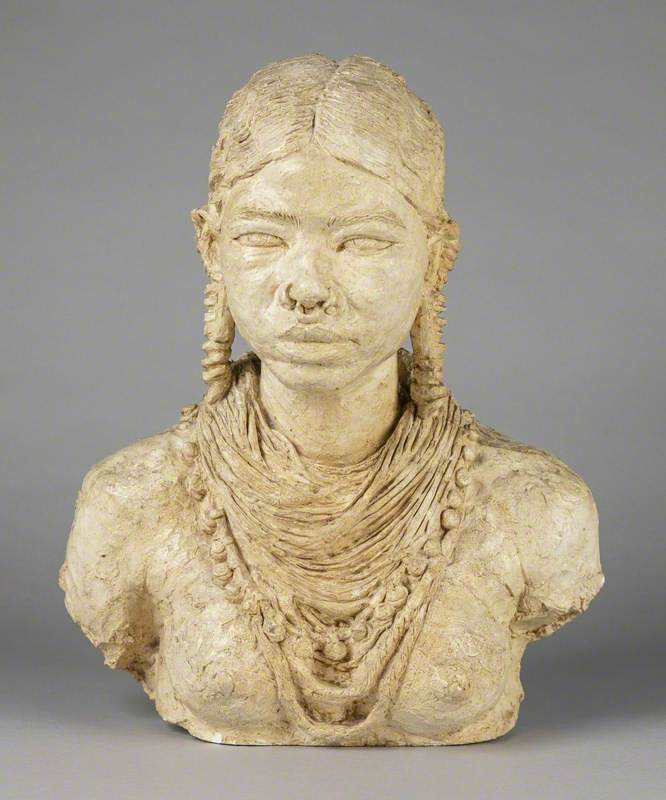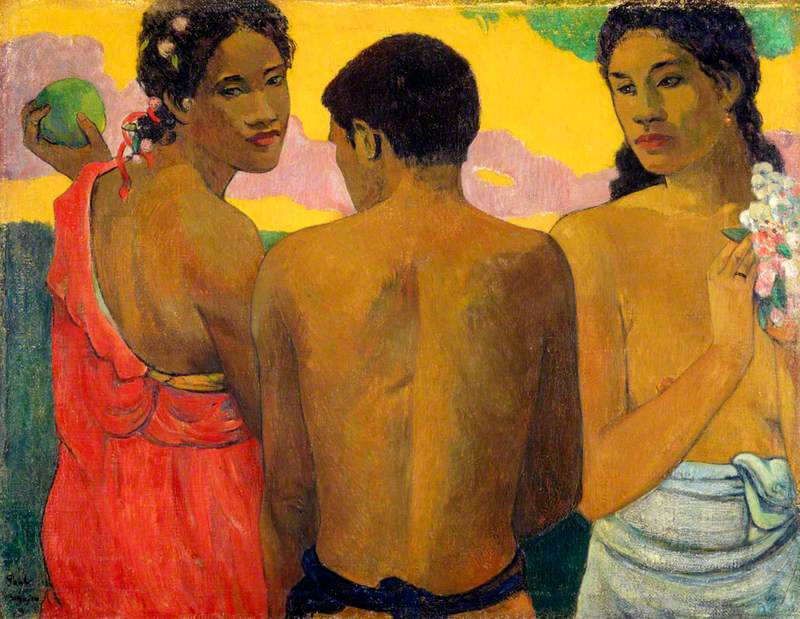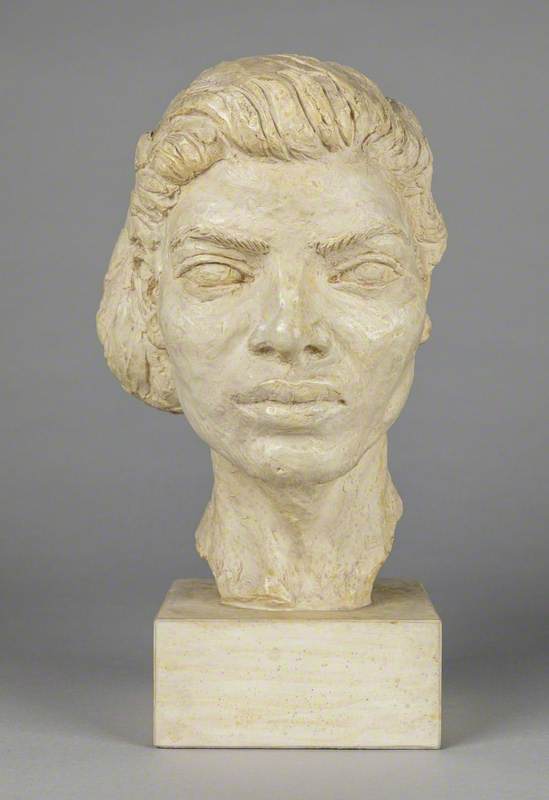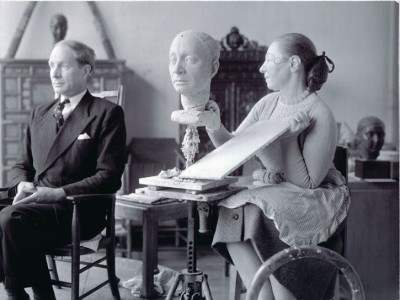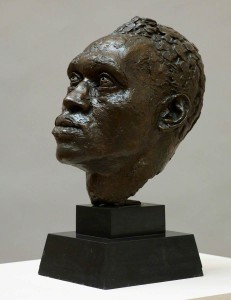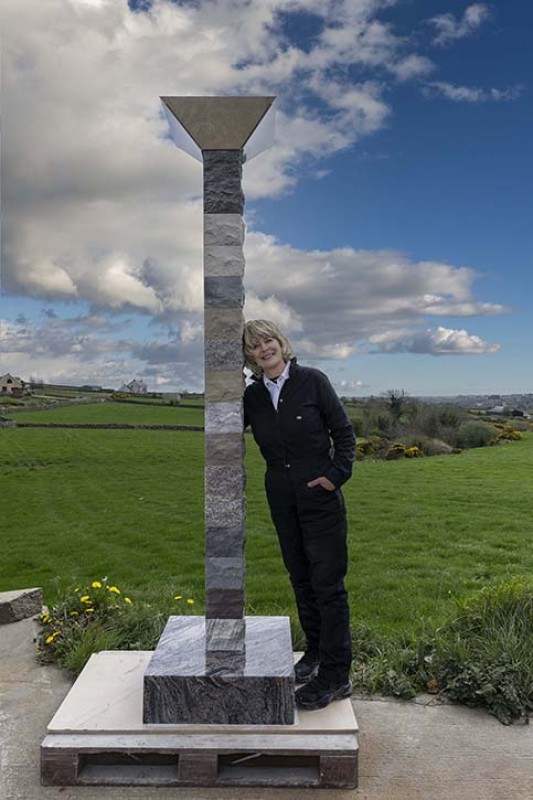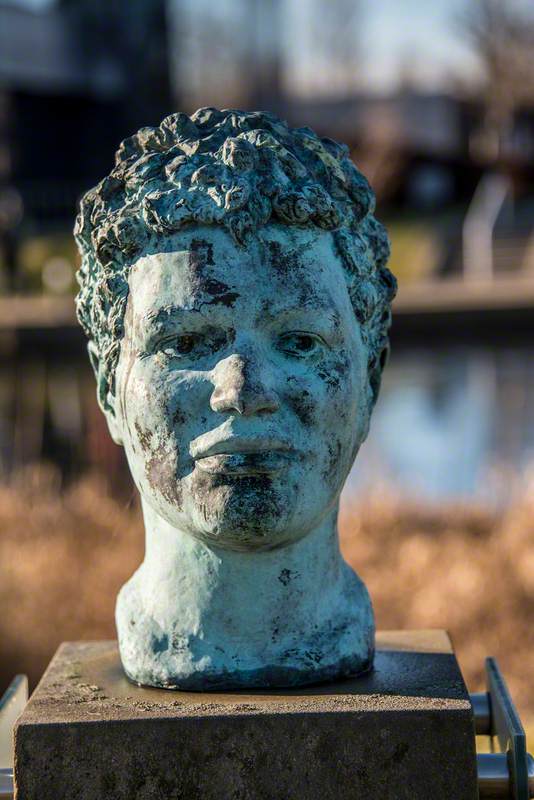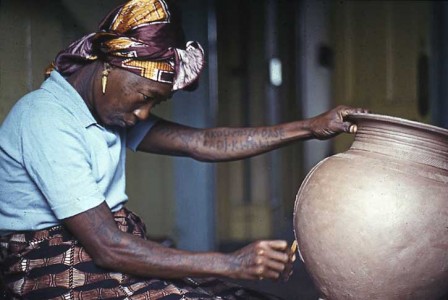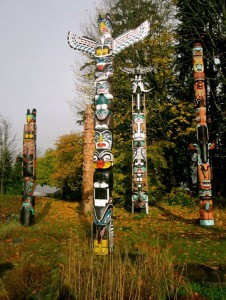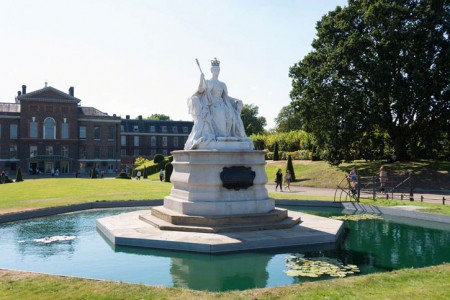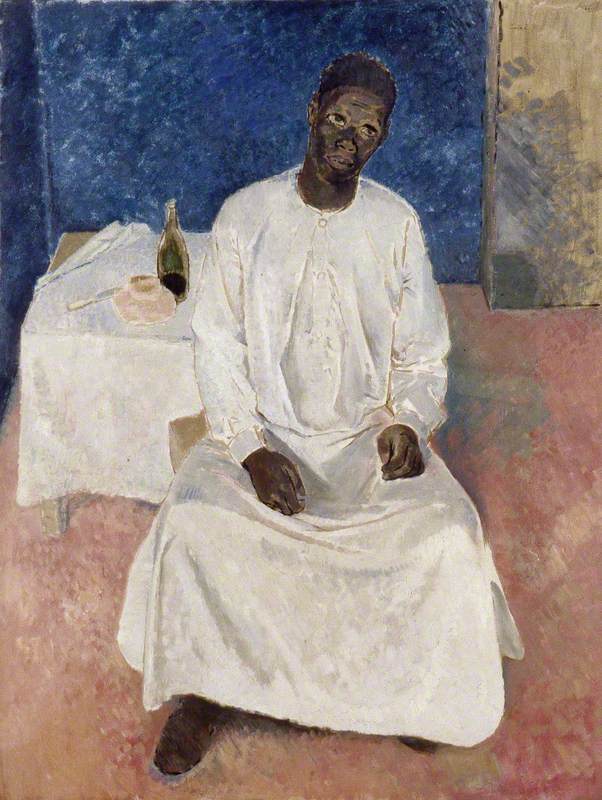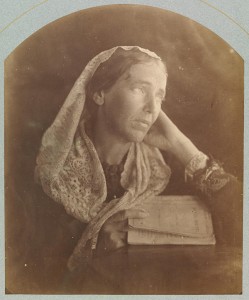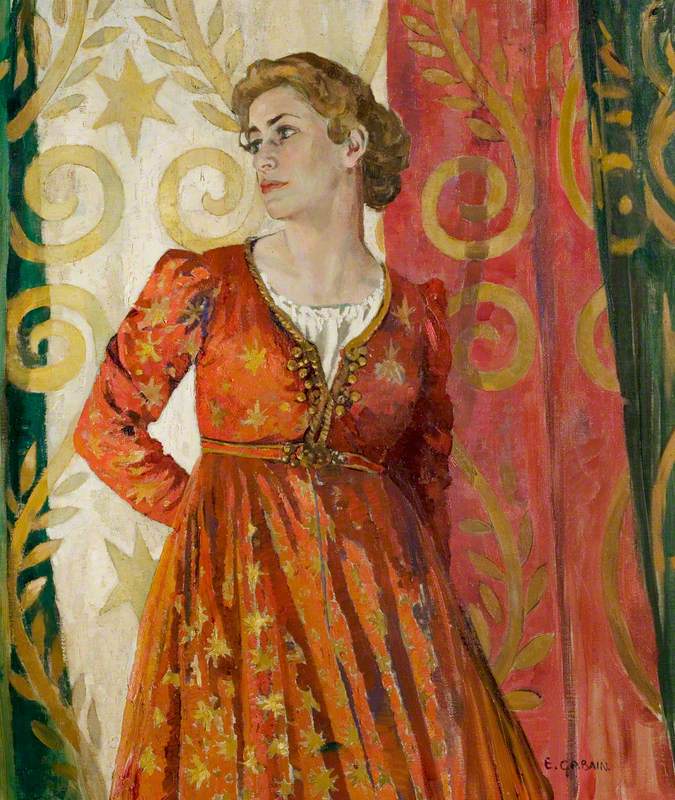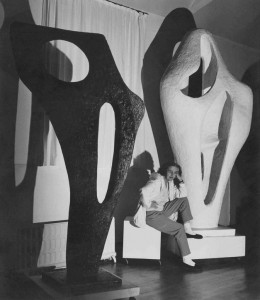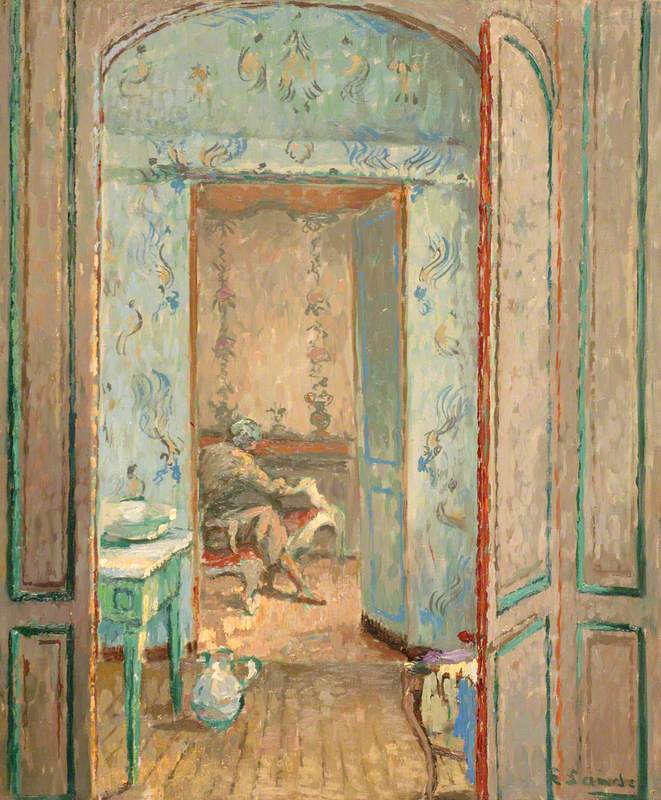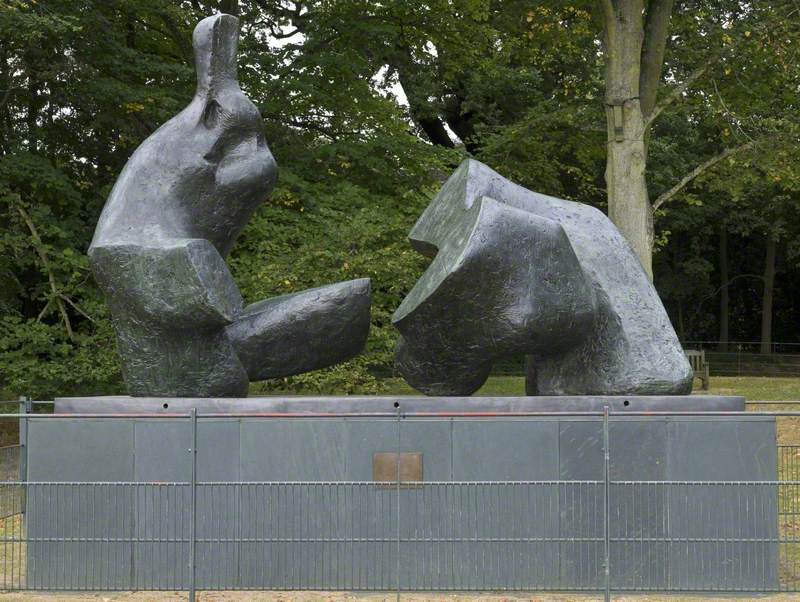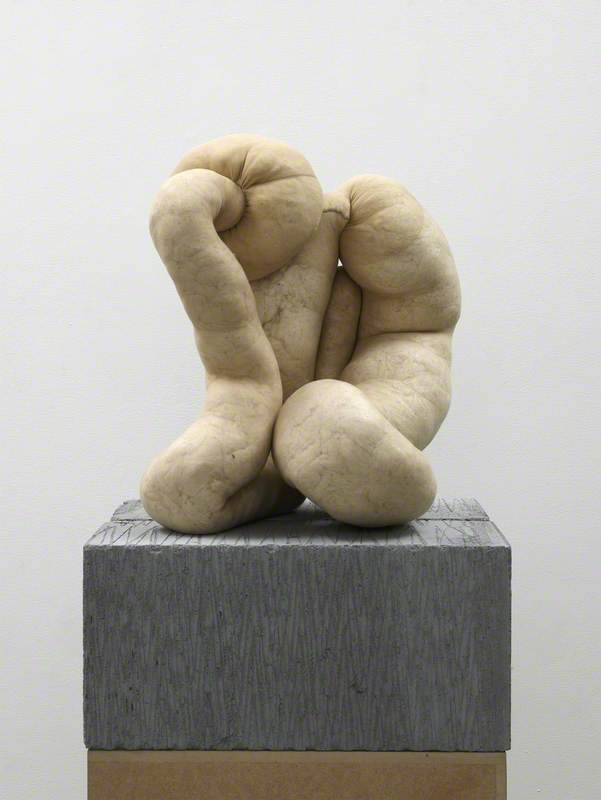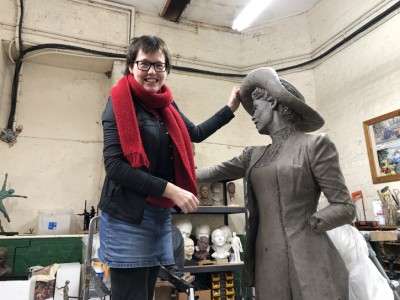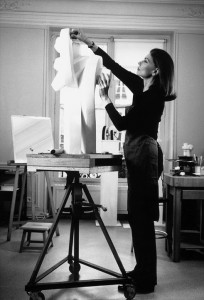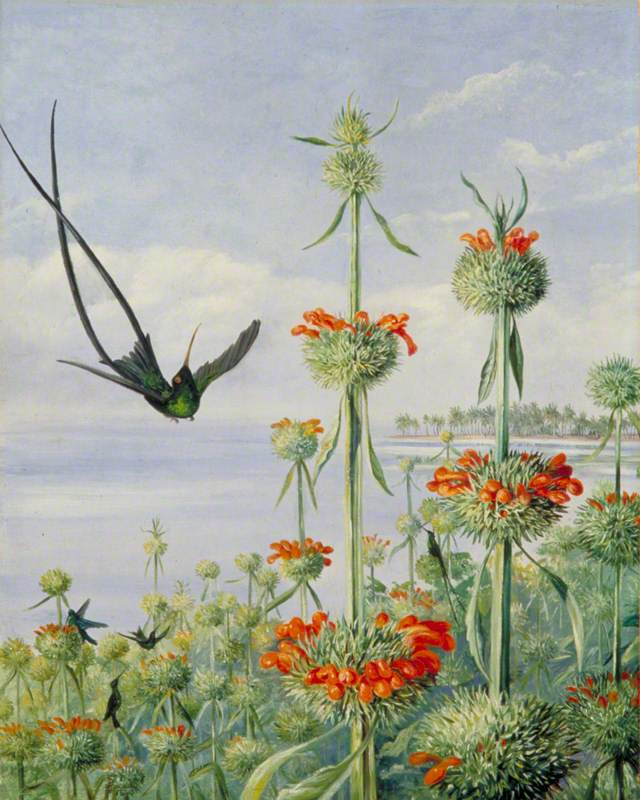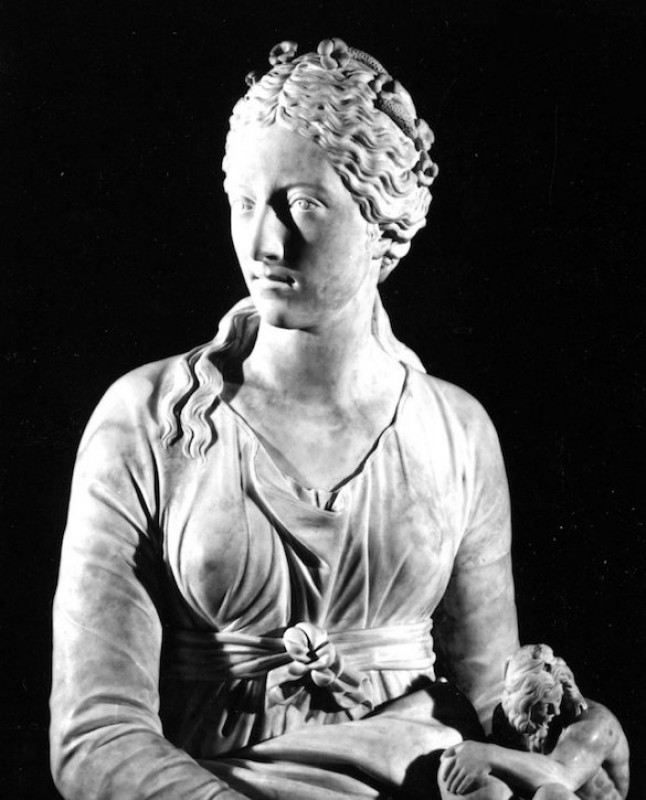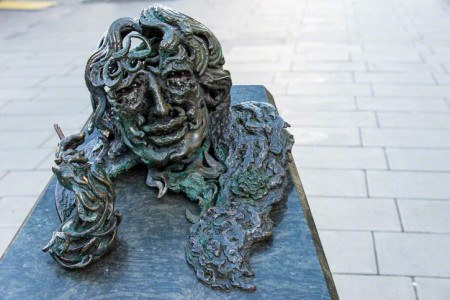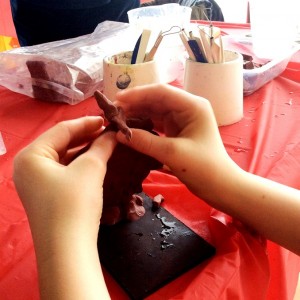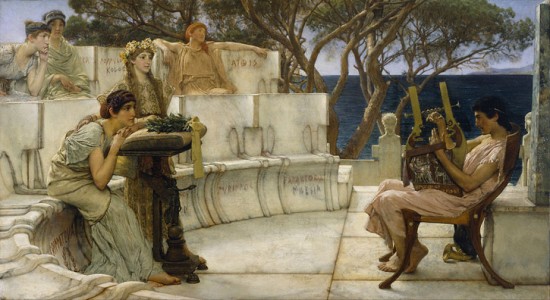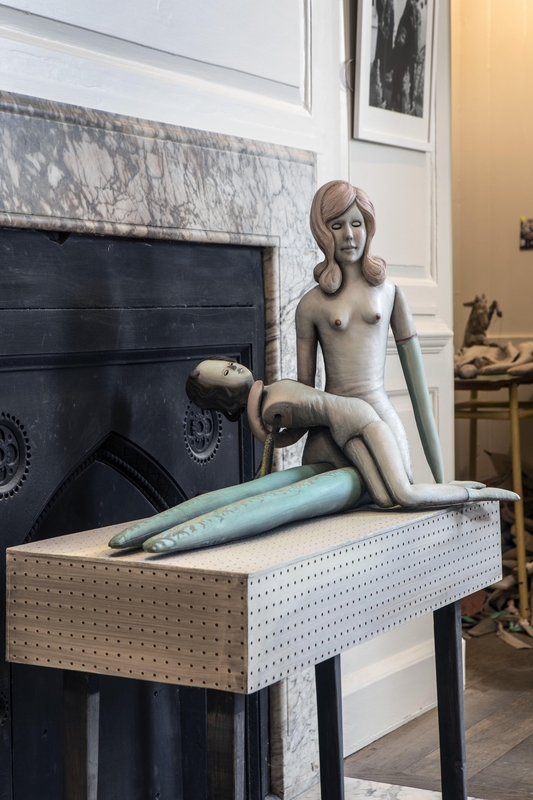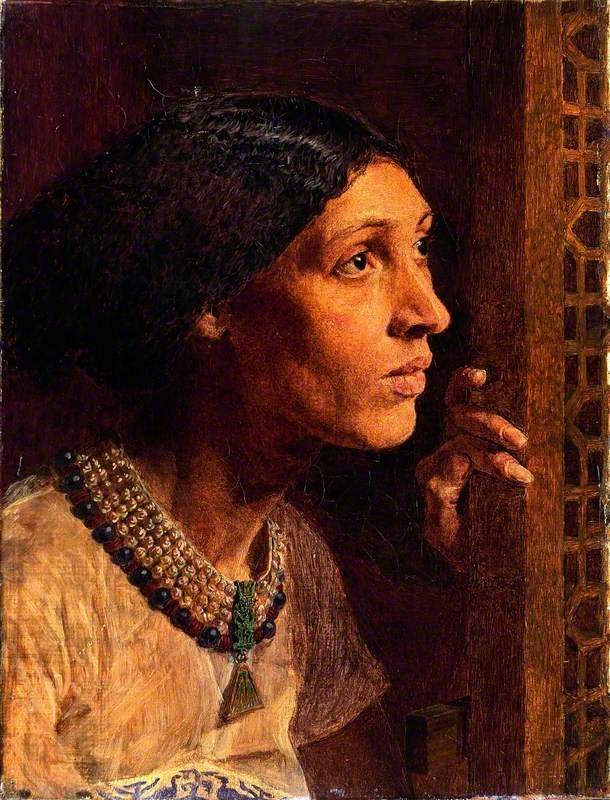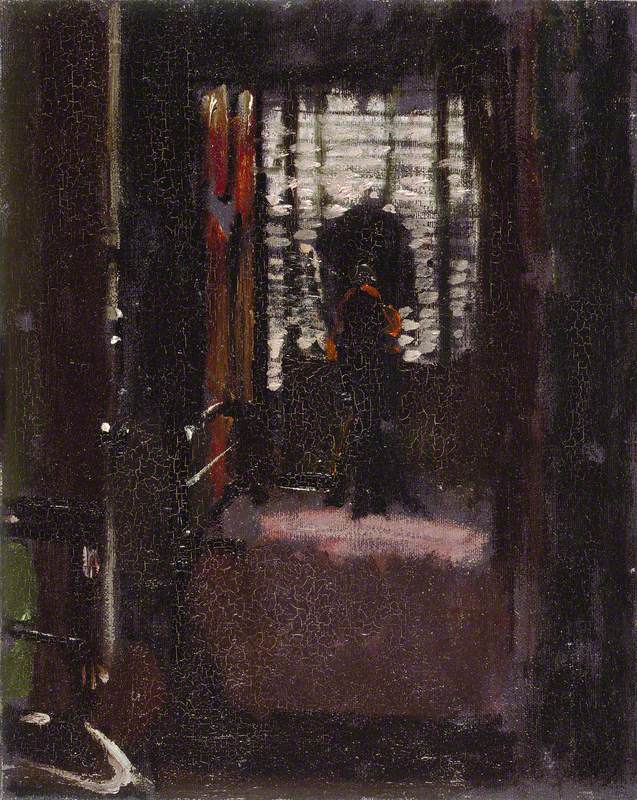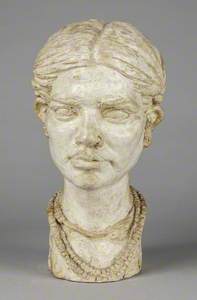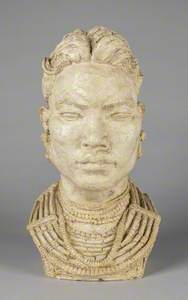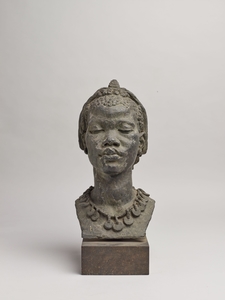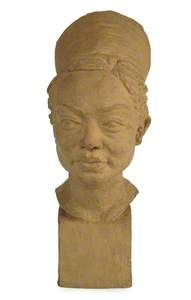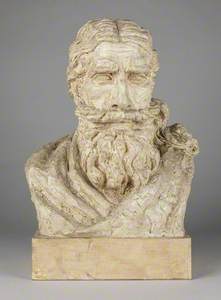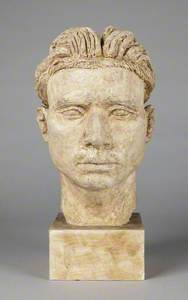Although born in the small nineteenth-century town of King's Norton in the West Midlands, much of Marguerite Milward's life would be focused on international travel and the diverse people she encountered. Her talents in art and interest in anthropology culminated in experiences of creative investigation combined with bold adventure. For a female artist of the age, her life was an unusual and intriguing artistic journey.
Inspired by the creativity of her architect father, Charles Allerton Edge (himself the son of Birmingham architect Charles Edge), Milward began studying sculpture and painting at local art schools in Birmingham and Bromsgrove. The young artist also gained experience as an apprentice woodcarver, providing her with a solid foundation for future endeavours in sculpture.
After her marriage in 1901, Milward accompanied her husband Philip on a trip to South America, facilitating her early yearnings for travel. Developing her artistic talents further, she spent time in Paris, where she studied at prestigious schools such as the Académie de la Grande Chaumière in 1907. It was during this time that she became a student of the revered French sculptor Antoine Bourdelle. Eager to explore further afield, Milward also travelled to Ceylon (now Sri Lanka), a visit that ended at the outbreak of the First World War.
After the death of her husband, Milward returned to Paris and became an assistant to her former tutor Bourdelle. Her reputation as a sculptor gained momentum in the French capital, reaching across the Channel to her English homeland. It was a visit to India, however, that would deeply impact her future creative path.
In 1926 Milward travelled to West Bengal to accompany Bourdelle on his mission to create a bust of the poet Rabindranath Tagore in Bolpur. Inspired by this trip, she returned to India to teach sculpture. In the course of her second visit, she met Biraja Sankar Guha, the Bengali director of the Anthropological Survey of India. It was a meeting which instigated Milward's subsequent artistic motivations.
Inspired by the research of both her British and Indian associates, the artist set out to create work that would aid the cause of science. This, she determined, could be accomplished by her creation of portrait sculptures of the Indigenous and Adivasi peoples of India.
In 1935, Milward began preparing for her first expedition which was planned to last for eight months. The idea of capturing the diversity of subjects she encountered on her travels throughout the Indian subcontinent, as a form of anthropological documentation, was welcomed by the academics of the age. In turn, her schedule was aided by recommendations from the British archaeologist and art historian Kenneth de Burgh Codrington.
Milward's explorations of India continued for a number of years, covering regions such as the Deccan Peninsula and areas surrounding the Himalayas. En route, the artist came into contact with various Indigenous communities and, as planned, she set about her artistic tasks. Milward's subjects were chosen with ultimate consideration, as the aim was to represent the typical physical characteristics of specific peoples for classification.
Such ethnographical work was viewed as essential to anthropological understandings of the age, and Milward's works – manifesting in over a hundred portrait busts – were received with enthusiasm by academics, including Milward's acquaintance, Cambridge archaeologist John Henry Hutton.
Created in a realistic style and in various materials including plaster casts, terracotta and bronze, the resulting busts were welcomed by British academia and were first exhibited at India House in London in 1936. By the late 1940s, the majority of Milward's sculptures were donated to the Cambridge Museum of Archaeology and Ethnology, much to the pleasure of Hutton, who was both a former administrator in India and emersed in anthropological research himself.
Milward's work was perceived as providing the field with some of the most intriguing representations of Indigenous communities from the Indian regions covered. A number of the works were also added to the collection of the India Museum in Calcutta (now Kolkata), viewed as 'scientific' reflections of people who inhabited the rural lands.
Milward's choice of the bust, a sculptural or cast form of representation rooted in the classical sculpture of Hellenistic Greece, clearly suited her aims. Focusing on a three-dimensional depiction of the head of the subject, it provided an expression created specifically to portray an individual or 'type'. At an average height of around forty centimetres, Milward's work captured the head and neck, while some of her sculptures also incorporated shoulders and occasionally the use of a plinth.
Aspects of her sitters were realistically captured, from specific facial features and hairstyles to personal jewellery such as necklaces and nose rings, thus allowing a reflection on the models themselves. Descriptions allocated to the work included references to the name of the sitter such as 'Budi' or 'Jumni', or offered an insight into their role, as reflected in the title of Dancing Girl.
Milward's work, while reflecting classical Western values in form, can also be viewed in the light of modernism's often problematic fascination with those living outside of the white, Western world.
Post-Impressionist painter Paul Gauguin's travels to Tahiti and depictions of Polynesian women inspired an early twentieth-century art world. Around this time, imagery inspired by global Indigenous cultures began appearing in many Western and European artworks, including the paintings of Pablo Picasso and, later, the sculptures of Henry Moore.
Milward's busts, however, did not intend to explore ideas surrounding the 'exotic aesthetic' (an archaic term by today's standards) but aimed to focus on significant scientific documentation. Nevertheless, it cannot be ignored that such work, like that of many of her fellow artists, was created amid the ongoing cultural and ideological impacts of Western colonialism.
Insights into Milward's methods of selecting and arranging her subjects have been enabled through reading her book, Artist in Unknown India, published in 1948. The publication provides detailed and first-hand accounts of her travels and work within the country. While reflecting her drive to complete her scientific and artistic aims, Milward's vision of categorising 'racial types' and her handling of Indigenous subjects does not make for comfortable reading today (though the outlook and language used were typical of that era).
Conducted during the last years of British rule in India, Milward's practices were indicative of life under the Raj. The personal experiences of sitters were often not fully considered, while individual physical appearances or behaviours could be attributed to whole communities, as Western biases were often credited as science. In the context of her own era, however, the motivation to create a catalogue of human diversity took precedence and this was certainly well received and encouraged by fellow academics.
Marguerite Milward sculpts the bust of 'Singaru'
photograph by unknown artist 
Milward's international explorations, far from common for English women of her time, are also indicative of a woman not only gifted with a talent in art and an intellectual curiosity but also, a confident and driven character. As the years went by, however, the artist's labours, which straddled the margins between art and anthropological research, largely disappeared from public view.
Rediscovered in the latter part of the twentieth century, Milward's work has recently been shown as part of 'The Past is Now' at the Birmingham Museum and Art Gallery, an exhibition with contemporary consideration of art created in the age of the British Empire.
P. L. Henderson, art historian and founder of @WOMENSART
